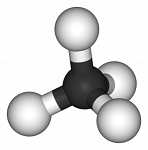Formation of Cyclic Ketones by Intramolecular Acylation
- Page ID
- 66731
Acylation is the process of adding an acyl group to a compound and the compound providing the acyl group is called the acylating agent. Acyl halides are commonly used as acylating agents because they form a strong electrophile when treated with some metal catalysts. For example, Friedel-Crafts acylation uses acetyl chloride (ethanoyl chloride), CH3COCl, as the agent and aluminum chloride (AlCl3) as a catalyst to add an ethanoyl (acetyl) group to benzene:

By Arrowsmaster (Own work) [Public domain], via Wikimedia Commons
The mechanism of this reaction is electrophilic aromatic substitution. Acyl halides and anhydrides of carboxylic acids are also commonly used acylating agents to acylate amines to form amides or acylate alcohols to form esters. The amines and alcohols are nucleophiles; the mechanism is a nucleophilic acyl substitution. Succinic acid is also commonly used in a specific type of acylation called succination. Oversuccination occurs when more than one succinate adds to a single compound.
Acylation can be used to prevent rearrangement reactions that would normally occur in alkylation. To do this an acylation reaction is performed, then the carbonyl is removed by clemmensen reduction or a similar process.
Protein acylation is the post-translational modification of proteins via the attachment of functional groups through acyl linkages. One prominent type is fatty acylation, the addition of fatty acids to particular amino acids (e.g. myristoylation or palmitoylation). Protein acylation has been observed as a mechanism of biological signaling.
References
- Vollhardt, Peter; Schore, Neil (2014). Organic Chemistry: Structure and Function. (7th ed.). New York, NY: W.H. Freeman and Company. pp. 714–715. ISBN 978-1-4641-2027-5.
- Resh, M. D. (1999). "Fatty acylation of proteins: New insights into membrane targeting of myristoylated and palmitoylated proteins". Biochimica et Biophysica Acta. 1451 (1): 1–16. doi:10.1016/S0167-4889(99)00075-0. PMID 10446384.
- Towler, D A; Gordon, J I; Adams, S P; Glaser, L (1988). "The Biology and Enzymology of Eukaryotic Protein Acylation". Annual Review of Biochemistry. 57 (1): 69–97. doi:10.1146/annurev.bi.57.070188.000441.
Contributors
Wikipedia (CC-BY-SA-3.0)


